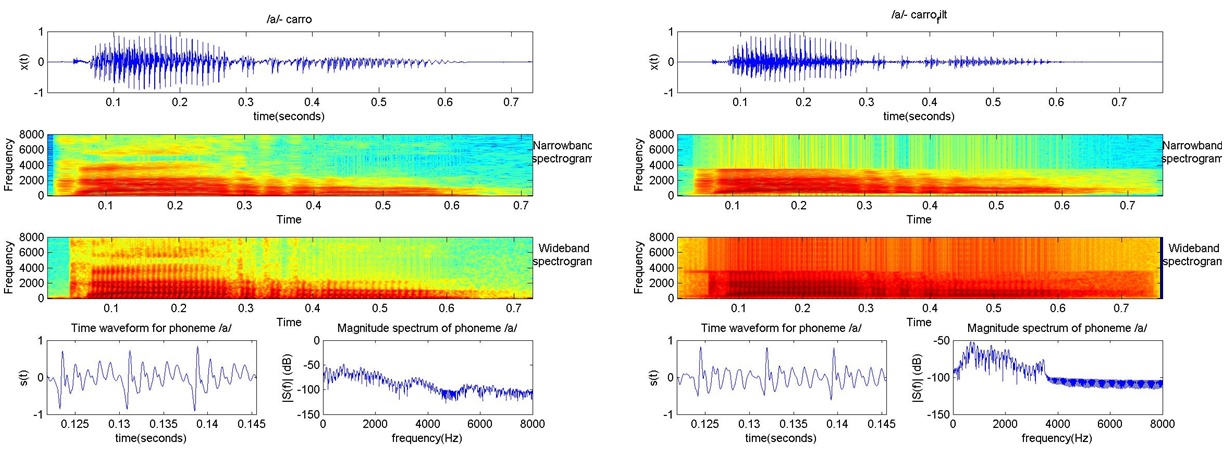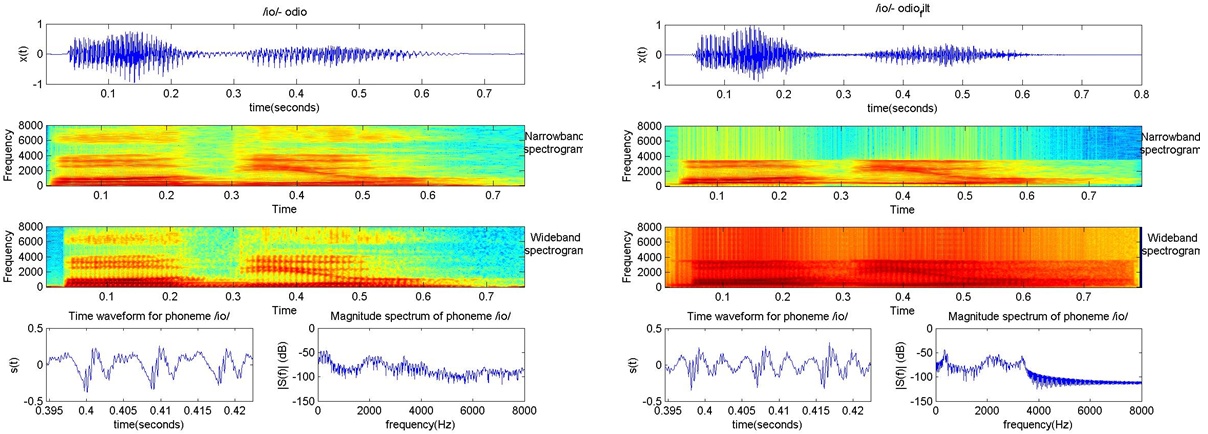
Internet Explorer® recommended
Telephone Channel
A telephone channel filter was developed, whose cutoff frequencies were 300 and 3500Hz working in a sampling rate of 16kHz. It is intended to show how this type of filters can affect speech signals and even music.
It was totally designed in frequency domain by manipulating the magnitude response of the input signal. Specifically, the method involves the elimination of the bands that are not desired, such as an ideal bandpass filter would be. This means that it is a linear phase FIR filter and has a frequency response as follows:
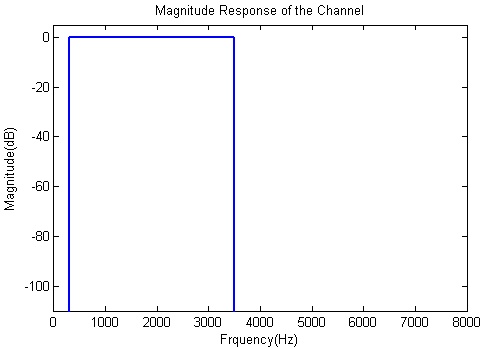
The channel was tested with two types of signal. The first one was a music+vocals signal that shows a stable magnitude response. However when it is filtered, it changes its shape dramatically, which means that the filter works properly. The same case is for the second test signal, which is a simple spoken sentence. In both cases, you can realize that the magnitude in the passband is similar in shape, but scaled. This is because of the normalization process that is applied in the last stage of the algorithm. This is necessary, since windowing methods mean a summation of data that is not really controlled, which turns out a scaled version of the original signal.
Specifically, for this experiment, the FFT size was 1024 samples, while windowing process consisted in a Hamming window, which length is 512 samples with an overlap of 75% .
You can listen to the signals tested as original version as well as the filtered output (click on the respective speaker icon). Also, the MATLAB code for this filter and plots is available here.
Music + Vocals Example
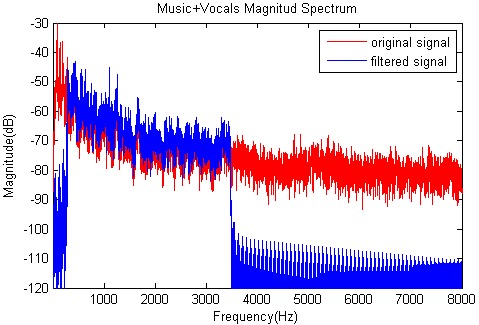
Spoken Sentence Example
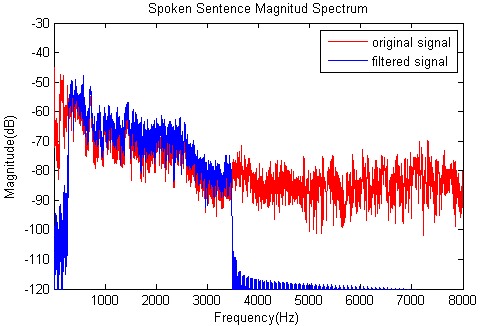
Also, the filter was applied to the recorded words used to exemplify the phonemes. We can summarize the results in the following examples:
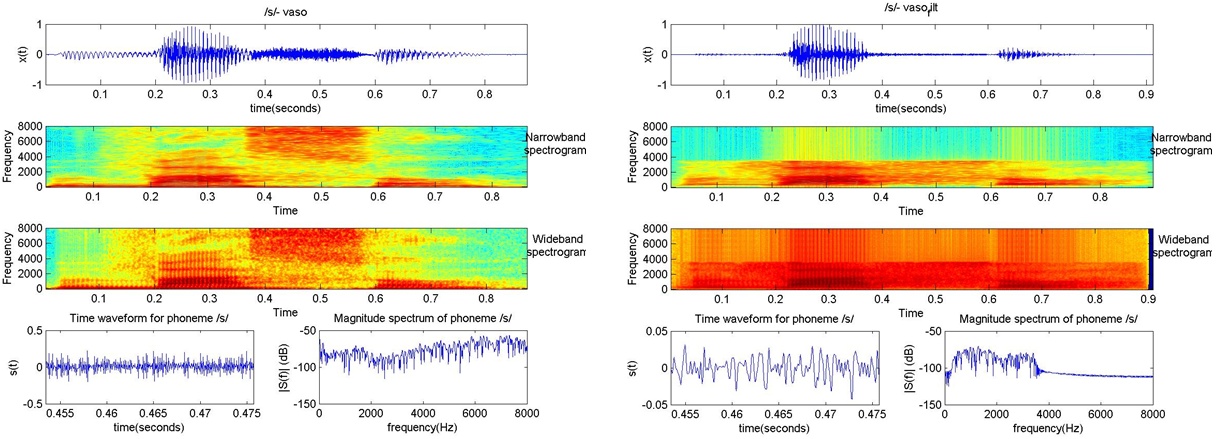
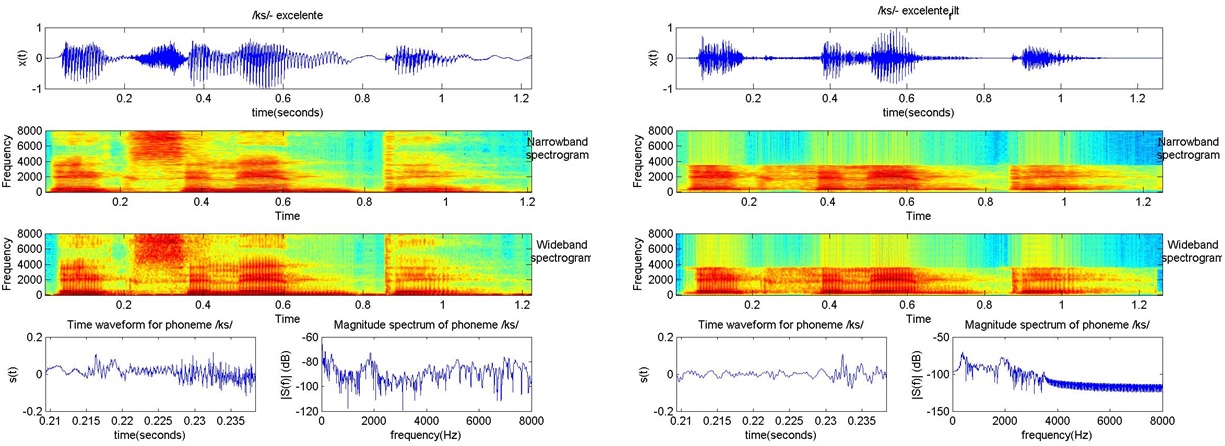
As expected, the telephone channel filter affects the frequency response of some fricatives phonemes diminishing its high frequency content. It could damage the intelligibility specially in phonemes that comprise high frequency content, such as /s/ and /ks/...
For the vowels and diphthongs (combination of vowels) the effect of the filter is even more. These types of phonemes comprise the generation of some formants, of which there are some that are in higher frequencies than 3.5kHz. For this reason, this formants do not appear in the filtered version. Of course, it could damage the intelligibility. See and listen the following examples:
